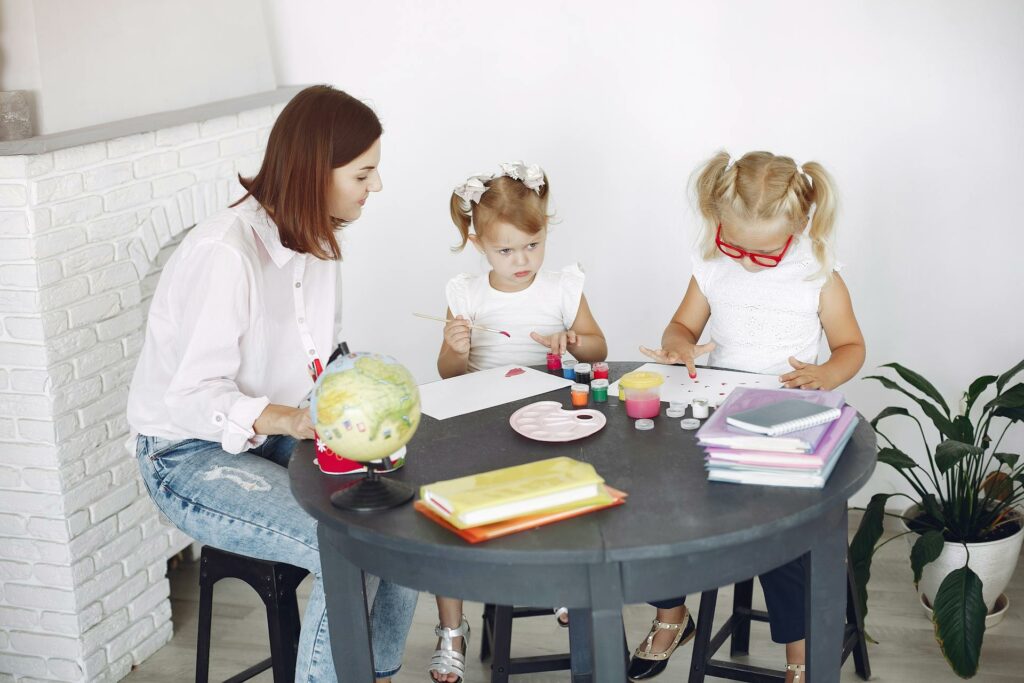In recent times, many parents have explored the idea of conducting preschool lessons at home, seeking to provide their young ones with a nurturing and personalised learning environment. Whether driven by personal preferences, health concerns, or the desire for greater flexibility, homeschooling preschoolers offers a unique opportunity to tailor education to the individual needs and interests of each child. In this comprehensive guide, we’ll delve into the essentials of conducting preschool lessons at home, empowering parents to create enriching educational experiences for their little learners.
1. Establishing a Framework for Learning
At the heart of successful preschool lessons at home lies a well-structured framework that balances learning objectives with flexibility and adaptability. Consider the following elements when designing your preschool curriculum:
Learning Goals: Clarify your overarching learning goals for your child’s preschool years. These may include developing foundational literacy and numeracy skills, fostering social-emotional competence, promoting creativity and critical thinking, and nurturing a love for learning.
Curriculum Design: Draw inspiration from established early childhood education frameworks such as the Early Years Foundation Stage (EYFS) in the UK or the Common Core State Standards in the US. Tailor your curriculum to incorporate a diverse range of subjects and activities, including language and literacy, mathematics, science, art, music, physical education, and social studies.
Daily Schedule: Establish a consistent daily schedule that includes dedicated time slots for structured learning activities, free play, outdoor exploration, meals, and rest. Strike a balance between teacher-led instruction and child-initiated exploration, allowing ample time for hands-on, experiential learning.
2. Creating an Enriching Learning Environment
The physical environment plays a crucial role in shaping children’s learning experiences. Create a stimulating and inviting learning environment within your home by:
Designating a Learning Space: Set aside a dedicated area within your home for preschool lessons at home and activities. This could be a corner of the living room, a playroom, or a spare bedroom. Ensure the space is well-lit, organised, and free from distractions.
Incorporating Learning Materials: Stock your learning space with age-appropriate books, toys, educational games, puzzles, and art supplies. Rotate materials regularly to maintain interest and novelty.
Promoting Exploration and Creativity: Encourage open-ended play and exploration by providing materials that inspire creativity and imagination. Offer opportunities for sensory experiences, outdoor play, and hands-on experimentation.
3. Implementing Developmentally Appropriate Practices
Effective preschool instruction is grounded in developmentally appropriate practices that recognise and respect the unique needs, interests, and abilities of young children. Adopt the following strategies to enhance your teaching approach:
Hands-On Learning: Prioritise hands-on, experiential learning experiences that actively engage children’s senses and promote active participation. Incorporate sensory play, manipulatives, and real-world experiences into your lessons to make learning meaningful and memorable.
Play-Based Learning: Embrace play as a primary mode of learning for preschoolers. Design learning activities that are intrinsically motivating, child-centred, and open-ended, allowing children to explore, experiment, and make discoveries at their own pace.
Individualised Instruction: Recognise and accommodate individual differences in learning styles, interests, and abilities. Offer a variety of learning opportunities that cater to diverse learners, providing support and scaffolding as needed.
4. Fostering Social-Emotional Development
Preschool is not just about academic readiness; it’s also a crucial period for social-emotional development. This can be challenging when conducting preschool lessons at home as children are isolated from peers. This is why it is important to cultivate a supportive and nurturing environment that promotes positive relationships, self-regulation, empathy, and resilience by:
Encouraging Peer Interaction: Facilitate opportunities for children to interact, collaborate, and communicate with their peers. Arrange playdates, join homeschooling co-ops, or participate in community activities to foster social connections.
Teaching Emotional Literacy: Help children develop emotional intelligence by labelling and validating their feelings, teaching conflict resolution skills, and modelling positive coping strategies. Incorporate mindfulness activities, relaxation techniques, and social stories into your daily routine to promote emotional well-being.
Promoting Independence: Empower children to become self-reliant and independent by encouraging them to make choices, solve problems, and take responsibility for their actions. Offer age-appropriate tasks and chores that promote autonomy and build self-confidence.
5. Assessing Progress and Celebrating Achievements
Regular assessment and feedback are essential components of effective teaching and learning. Monitor your child’s progress, identify areas of strength and growth, and celebrate their achievements by:
Observing and Documenting Learning: Keep a record of your child’s learning experiences, observations, and achievements. Use journals, portfolios, photos, and videos to document their progress over time.
Reflecting on Learning Outcomes: Reflect on the effectiveness of your teaching strategies and curriculum choices. Adjust your approach as needed to better meet your child’s evolving needs and interests.
Celebrating Milestones: Recognise and celebrate your child’s milestones, accomplishments, and efforts in preschool lessons at home. Provide positive reinforcement, praise, and encouragement to nurture their self-esteem and motivation.
6. Cultivating a Love for Lifelong Learning
Above all, foster a love for lifelong learning by making learning enjoyable, meaningful, and relevant to children’s lives. Instil in them curiosity, wonder, and thirst for knowledge that will continue to fuel their educational journey beyond preschool.
Conclusion
In conclusion, conducting preschool lessons at home offers a unique opportunity for parents to actively participate in their child’s early education journey. By establishing a well-rounded curriculum, creating an enriching learning environment, implementing developmentally appropriate practices, fostering social-emotional development, assessing progress, and cultivating a love for lifelong learning, parents can provide their children with a solid foundation for future academic success and personal growth. If you still have questions about homeschooling your children, book a consultation with Knowledge Thirst Media. This valuable consultation will help you embrace the adventure of homeschooling preschoolers, and watch as your little learners flourish and thrive in the comfort and security of home.

